Kyoto, Shirakawa-go & Gokayama, Japan Alps
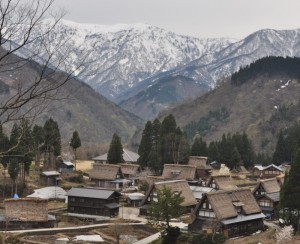 |
Background
I originally planned to visit Japan last October and had a ticket issued. But I changed my plan and went to Canada instead to visit Paulina who was sick. I had to use the ticket and decided to see in Japan during the cherry blossom season. The places on my list include Kyoto, Shirawaga-go, Hokkaido and the 88-Temple Pilgrimage route in Shikoku.
April 19 Friday: Hong Kong – Osaka – Kyoto (GMT+9)
I departed Hong Kong at 10:10am and arrived in Osaka at 2:30pm. I exchanged my train voucher which would start on April 22. To save money, I took a normal train to Kyoto for 1820 Yen (¥) leaving at 3:32pm. I had to change twice and finally arrived at the Kyoto train station at 6pm.
I found a brand new hostel called Piece Hostel which is within 5 minutes’ walk from the train station. I booked online and was thrilled to discover this new hostel which is one of the best hostels I have ever stayed. It has the best shower facilities, clean toilets with heated seat and a big (double) bed with curtain. The amicable ambience with Japanese garden surrounding the building, a modern kitchen, a relaxing common room and a small bar all fitted into a small space is very Japanese. Above all, there is a free breakfast with rice with seaweed and several types of bread with tea or coffee.
There are hundreds of restaurants inside the train station complex. I found a popular sushi restaurant with a long queue outside and joined the queue. They charge a flat rate of ¥137 per plate and I had six for ¥950. Not bad!
I was very tired but could not sleep well. I coughed a lot and was worried that I might disturb others.
April 20 Saturday: Kyoto – Miho Museum – Kyoto
Today, I visited Miho Museum, a world famous private museum designed by I.M. Pei, an American Chinese architect. To reach the museum, I had to take a train to Ishiyama and then a bus. I left the hostel before 8:30am to take a train to Ishiyama and then a bus. I took an hour and a half to get there.
This museum is a must-see for three reasons. First, the setting and scenery is unique and most beautiful. Second, the architecture is superb transcending time and western and eastern culture. Third, the private collection here is awesome. The entrance fee of ¥800 is the best value museum visit I have ever had in Japan. I also got an audio guide in English for ¥500. The explanations are most informative and detailed (though I find the tempo a bit slow and there is no English explanation on the temporary exhibition on Glass).
The museum is divided into north and south wings. I started with the permanent exhibition in the south wing on Egypt, Greece and Rome, West Asia and China. The special exhibition in the north wing is “Ancient Glass: Feast of Colours” with a total of 231 exhibits including ten pieces on loan from the British Museum. Fascinating, unfortunately, the audio guide is only in Japanese.
It started to rain and I left the museum after 3pm. I had to wait for the bus till 4:07pm. By the time I reached Kyoto it was 5:30pm. I spent over an hour looking at shops and new buildings around the station. There are hundreds of eateries and I found a floor specialized in noodles. I had large bowl of noodles but was still hungry. I went to a fast food shop for my second dinner! I could not understand why I was hungry after having eaten more than usual. I was tired and went to bed early.
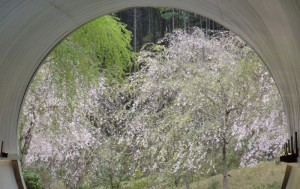 |
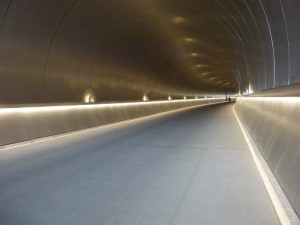 |
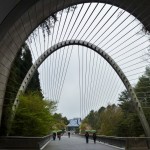 |
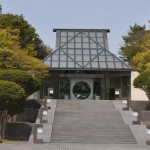 |
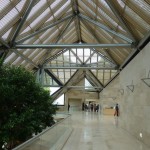 |
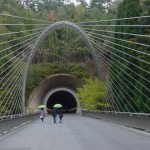 |
April 21 Sunday: Kyoto
I had a leisure sightseeing day with a bus pass for ¥500. I first walked to the Toji Temple built by the Emperor Kammu when he transferred the capital from Nara to Kyoto in 794 AD. Emperor Saga honoured Kukai (Kubo Daoshi), founder of the Shingon Buddhism with Toji Temple which has been the central seminary of Esoteric Buddhism. The temple is now a World Heritage Site. I was lucky to be there on April 21 as there is a Mieiku (Kodo market). I brought a comined ticket for ¥1000 to see the temple, a special exhibition on art works related to Kubo-Daishi and a residence close by.
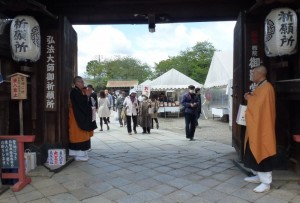 |
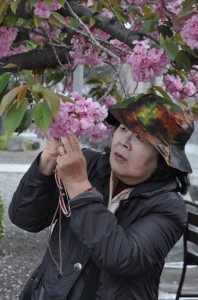 |
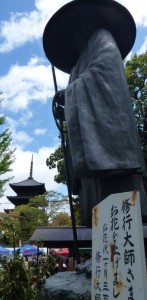 |
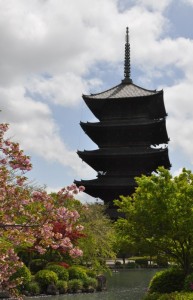 |
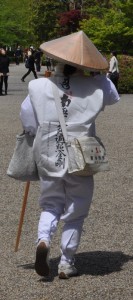 |
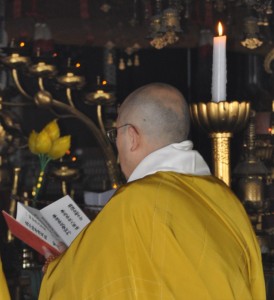 |
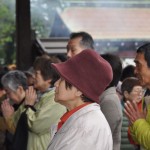 |
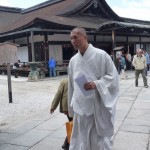 |
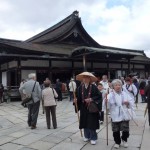 |
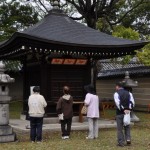 |
There are several main buildings in the temple.
Five-storied Pagoda (the highest pagoda in Japan at 187ft)
First built by Kubo –Daishi in 826, it was burnt down four times and the present structure was built in 1644. Kon-do – Main Hall (796) reconstructed in 1603.
Kanchi-in (The Main Hall)
It is the largest hall in the temple. The well-preserved five wooden statutes from Tang Dynasty (847) are most beautiful and the best I have ever seen from that period.
Ko-do (lecture hall) (825 – 835)
The present structure was reconstructed between 1596 and 1615. In this hall, there are 21 Buddhist statutes arranged according to the Mik-kyo Mandala described in the main sutra of Esoteric Buddhism with Dainichi-nyorai in the centre. The statutes brought back by Kubo-Daishi in the 9th century from China were outstanding sculptures beautifully carved and preserved in excellent condition.
Miei-do (Daishi-do)
Kuboi-Daishi lived and prayed here. On the 21st of every month, his followers come here to pray and worship the image of Kubo-Daishi in this hall. This elegant building shows three types of architectural styles.
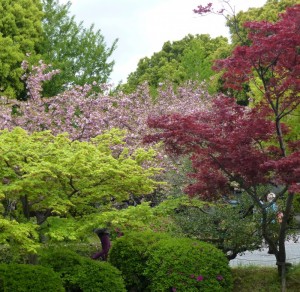 |
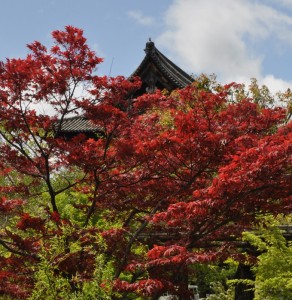 |
After spending over three hours in Toji Temple, I walked to the Nishi-Honganji Temple (a World Heritage Site), the main temple of the Pure Land teaching established by Shinran Shonin (1173-1263) and the Ryukoku University (1879) which blends in the European and Japanese architectural styles.
I used my bus pass but boarded the wrong bus to go to the Shimogamo Shrine. As a result, I got there after 4pm and could not get in. I took another bus to go to the Kamigamo Shrine (a World Heritage Site). It was closed as expected but the scenery and the setting at the foothill of the Northern Hill is fantastic. I would certainly come back to see it on my next visit.
April 22 Monday : Kyoto – Shirakawa-go (gassho-zukuri houses)
I got up at 6am and took the 9:06 train to Kanazawa where I changed a local bus to Shirakawa-go. The bus fare was ¥1800 and left at 12:35pm. I had over an hour for window shopping and lunch before the 90-minute bus ride.
I stayed in Koyida (a minshuku) next to the temple for ¥8000 (with breakfast and dinner included). I spent the next three hours strolling in this exquisitely beautiful village with some thatched roof houses.
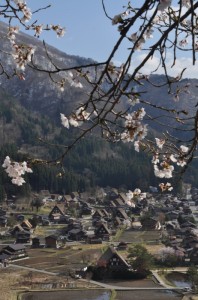 |
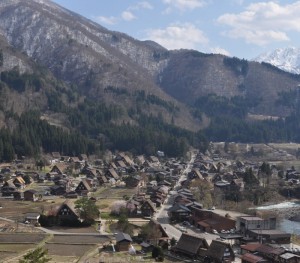 |
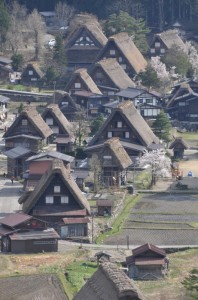 |
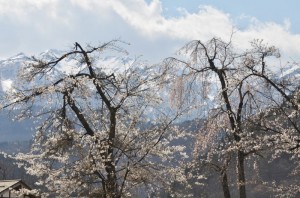 |
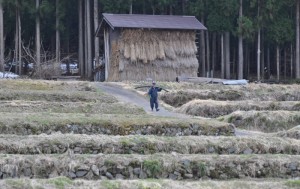 |
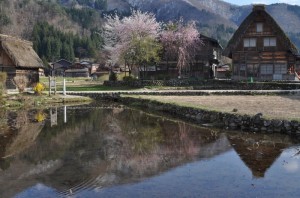 |
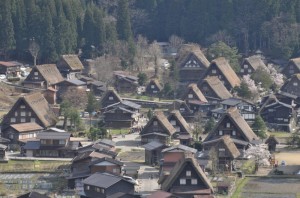 |
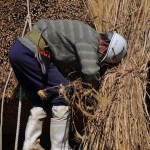 |
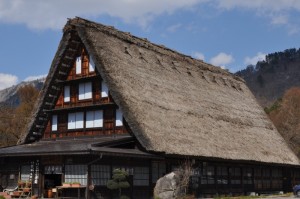 |
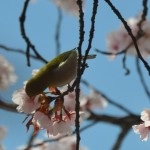 |
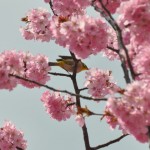 |
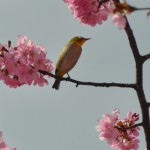 |
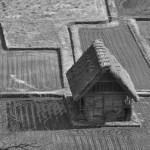 |
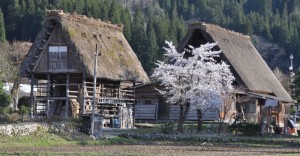 |
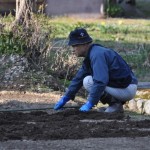 |
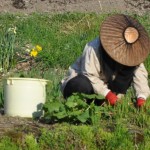 |
The weather was fine and there were over a dozen of tourist buses. I found many Chinese tourists from Taiwan and Hong Kong. I think the place would be overcrowded and too touristy during the high season in the summer and autumn.
I was served a nice home-made dinner with the famous Takayama beef and a grilled fish for dinner. The other lodger in the house was Miss Chan from Taipei. We had a nice chat and she has been to Japan several times. She had brought a 3-day pass from Jaana Station to the three villages but would not be using the pass to see the other two villages (i.e. Suganuma and Ainokura), she kindly gave her pass to me. I appreciate her generosity and kind thought.
I turned off the light at 10pm. There is no vehicle noise and I could only hear the running stream and gentle wind blowing.
April 23 Tuesday: Shirakawa-go – Suganuma – Ainokura – Toyama
I got up before 6am and took a walk before getting the 7:05am bus to Suganuma (a World Heritage Site) similar to Shirakawa-go with traditional landscape of Japanese mountain villages.
Suganuma by the river (nine thatched roof houses)
There are only nine thatched roof houses with ponds and fields under cultivation. There are also several thatched roof houses used as a youth camp nearby. I was the first visitor of the day and a gentleman from a local eatery kindly let me leave my suitcase there while I strolled around the village.
I spent three hours enjoying this pure and unworldly land. I watched the locals opening their stalls and a farmer going to the field with his tools on his back. A saw another group of photographers arriving and spent hours in a few spots to capture the best shots of the day.
There are two museums here. I only visited the Folklore Museum which has a small but well—preserved collection. I returned to the eatery and had a plate of tofu, famous from this region for ¥500. It is unique with a strong and authentic soya taste, firm yet soft texture.
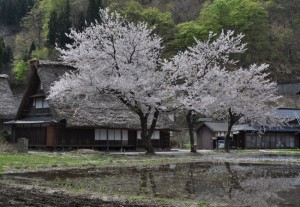 |
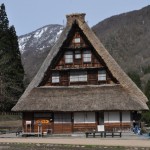 |
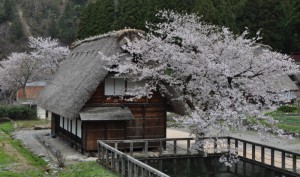 |
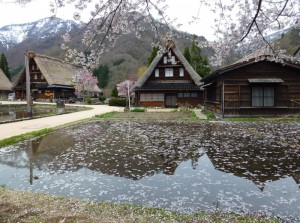 |
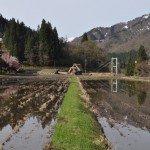 |
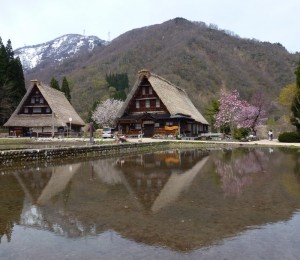 |
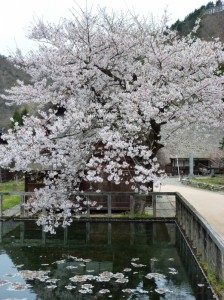 |
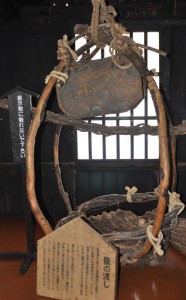 |
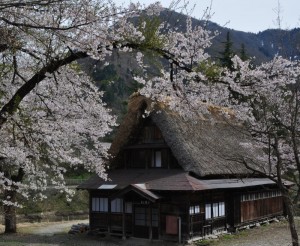 |
Ainokura on a terrace
I took the 11:07am bus to Ainokura with 20 thatched roof houses. Located on a terrace above the Shogawa River, this village looks less prosperous than the other two villages. It is not as photogenic but more down-to-earth and a normal village unchanged since the Edo period with working fields and forest, ponds and rivers, Most of the houses are 100-200 years old but the oldest is said to be dating back to 17th century. Once again, I tried the tofu for ¥350.
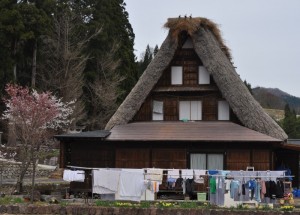 |
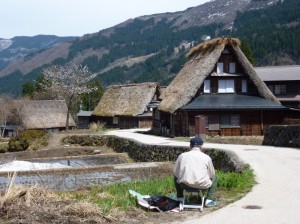 |
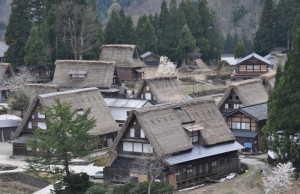 |
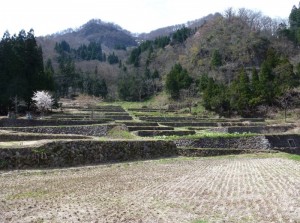 |
The bus service though not frequent is most punctual. I continued my journey, took the 1:57pm bus and arrived at the Johana Station. As I had just missed the 2:15pm train and had to wait some 50 minutes for the next one. I walked to a temple which is also from the Pure Land school of Buddhism. The temple is under renovation.
I had to change in Takaro and finally arrived in Toyama at 1644. I stayed in a simple local inn close to the train station for ¥3500.
April 24 Wednesday: Toyama – Murodo-daira Plateau (2450m)
I brought a return ticket Toyama – Murodo for ¥6530. It was a miserable and rainy day. I started off just before 9am taking a train to the Tateyama Station (475m), then a tram to Bijodaira (977m) before boarding a bus to Murodo. I finally arrived around midday.
I spent one night in a local inn paying ¥8200 a bed and two meals. As I was alone, I had the whole room! The inn keeper kindly lent me a pair of gum boots and a walking pole. From Murodo, one can walk to the highest peak Mt. Tateyama at 3015m. It is not for me: I enjoy a leisure stroll in the snow.
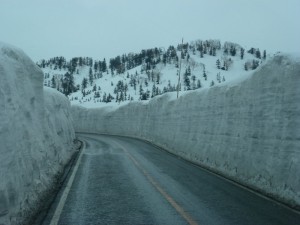 |
Tourists can take the Tateyama Tunnel trolley bus to Daikanbo (2316m), then a ropeway to Kurobedaira (1828m) and Kurobeko (1455m). After a short walk, one reaches the Kurobe Dam where there is a trolley bus to Ogizawa (1433m). A single trip from Toyama to Ogizawa costs over ¥10,000.
April 25 Thursday: Murodo-daira – Toyama
It rained heavily in the night. I was woken up around 2:30am and saw many hikers going out in the dark. They would climb to the peak to watch sunrise. I had breakfast at 6:30am and walked for three hours in the snow.
It was a great day with sunshine and blue sky. The scenery is surreal and most beautiful. I walked through the ice-wall tunnel and visited the conservation centre. At noon, I took a bus to Bijodaira and then the train to Toyama.
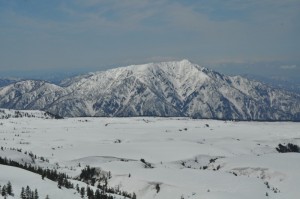 |
There is not too much to see in Toyama which had been badly destroyed during the Second World War. The Toyama castle first built in 1543 has a sad history of demolition and destruction by fire. In 1873, the Meiji government ordered it be closed. The present tower has been built as a memorial.
April 26 Friday: Toyama – Niigata – Akita
I took the 7:18am train to Niigata and spent a few hours looking at this port city, one of the five ports opened to foreign trade in 1859. I brought a Niigata city loop bus ticket for ¥500.
I like Niigata which is small, neat and windy with tulips lining its main streets. My plan was to visit the Northern Culture Museum housed in the mansion of the Ito family of Niigata. But the tourist information staff gave me wrong instructions and I found myself at the Northern Culture Museum Niigata Annex instead. The museum is outside the city and costs me ¥450. It is a rip-off.
I took the bus to the Niigata City Art Museum but found it closed. I was fed up. After a short stroll to take a look at the Sea of Japan, I walked back to city, crossed the Bandai Bridge and reached to the Bandai Market. I had fresh sashimi for lunch. I was back in the train station to board the 3:30pm train to Akita.
At 6pm, I arrived at Akita’s modern train station. I had not booked a hotel and had to find one in a hurry. After wasting more than half an hour, I finally found a room in Hotel Alpha-1 right opposite the station. It is a chain hotel group providing simple but comfortable accommodation at reasonable rates.
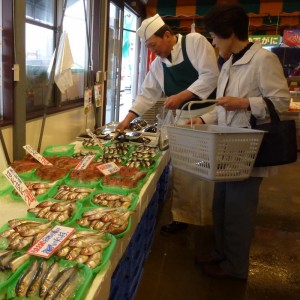 |
At 6pm, I arrived at Akita’s modern train station. I had not booked a hotel and had to find one in a hurry. After wasting more than half an hour, I finally found a room in Hotel Alpha-1 right opposite the station. It is a chain hotel group providing simple but comfortable accommodation at reasonable rates.
April 27 Saturday: Akita – Aomori
I had a good sleep. After checking out, I went to a local market which sells fresh fish and local produces. I also visited two museums namely Akita Senshu Museum of Art (¥800) opened in 1898 which has a commemorative collection of the works of Okada Kenzo and another museum (¥ 610) nearby. Both museums are not worth visiting: there is no information in English and the exhibits are not special. Akita has many museums but I am not sure what to expect after visiting these two.
I went to the ‘Osumi-yagura’ Tower of the former Kubota Castle (¥ 100) which once had eight similar towers. This tower restored in 1989 offers a good view of the city on a grey, windy and cold day. I strolled in the garden which was supposed to be very pretty during the cherry blossom season. But due to cold weather, the flower had not open yet. What a pity!
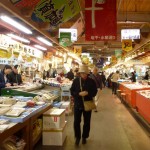 |
I took the 1pm train to Aomori. On the way, I thought of getting off the train at Hirosaki which is famous for its cherry blossom. But as it was raining, I thought I would better make my way to Aomori direct.
Due to the Golden Week, most hotels were fully booked. I had great difficulty in finding a modest room in a local hotel for ¥3500. I walked to the market area nearby which has several streets filled with local shops and a fish market. But the market was closed as it was about 5pm.
Then I discovered another large seafood market below a modern building where a public library is located on the top three floors with a view of the city! I also found a restaurant which has a performance of traditional music and singing at 7pm. After taking a stroll along the harbour front, I returned here for a local dish with scallops served in a shell. The scallops were fresh and delicious. I only paid ¥850 for my meal with entertainment.
April 28 Sunday: Aomori – Hirosaki – Sapporo
I had a long and busy day. I got up before 6am and checked out. After locking my suitcase in the station, I took a walk around the waterfront park before taking the 7:09am train to Hirosaki which had a cherry blossom festival from April 23 to May 6.
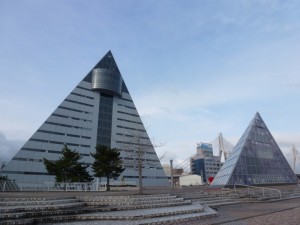 |
The Hirosaki Castle surrounded by three moats is one of the best places for cherry blossom viewing. There are some 2500 cherry blossom trees including over 100 old trees and the oldest one in Japan. The backdrop of the sacred Mt Iwaki with cherry blossom has made this one of the top three spots for cherry blossom viewing in Japan.
I was on my foot from the minute I stepped off the train at 8am to the moment was on the train at 1:44pm. I brought a combined ticket for ¥500 to see the castle, the botanic garden and a memorial garden. I walked along the western side of the castle which is said to have the most beautiful cherry blossom corridor. As the weather in Japan had been cold, few cherry blossoms were open. I then walked to an architectural district and visited four preserved old houses that were open and free for public viewing.
 |
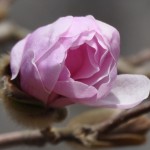 |
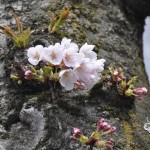 |
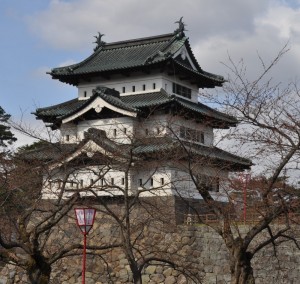 |
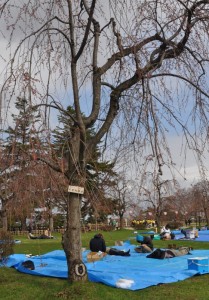 |
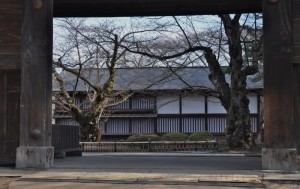 |
On my way back the train station, I found a small eatery which sells home-made noodles. I had a soba with tempera and ordered another. Wow, I only paid ¥790 for two bowls of excellent noodles!
I took the 2:57pm train to Sapporo, Hokkaido and arrived at the station at 9pm. I stayed at the hotel chain that I discovered in Toyama and only paid ¥3900 for a nice room on the lady floor with breakfast. Great value!


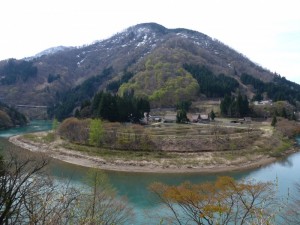
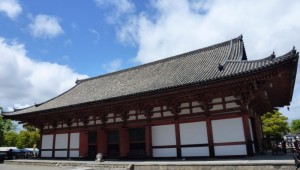
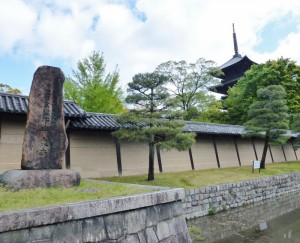
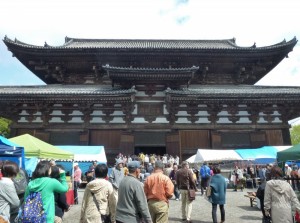
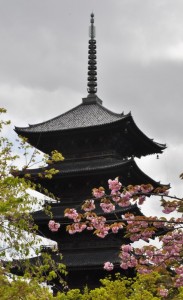
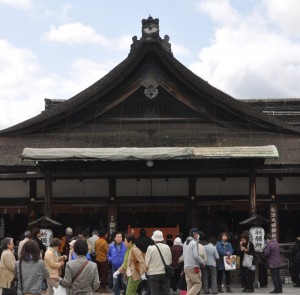
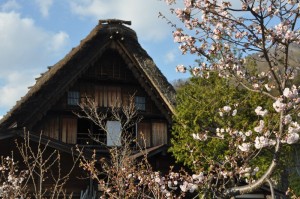
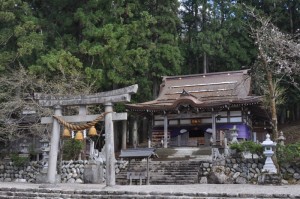
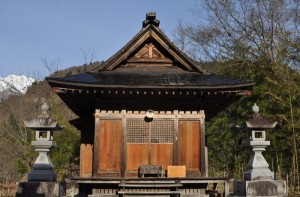
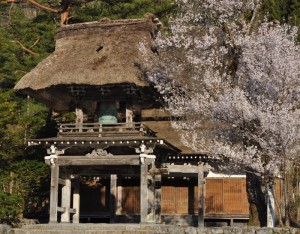
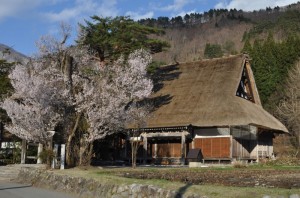
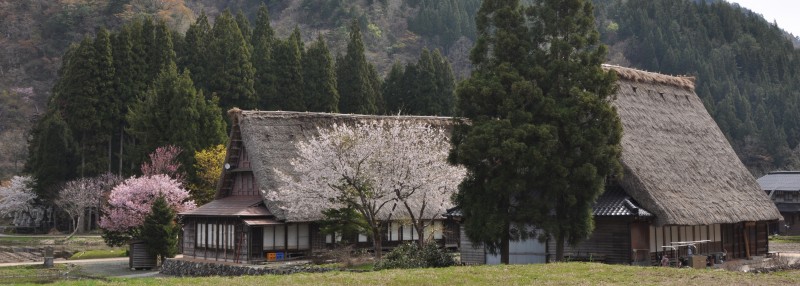

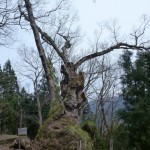
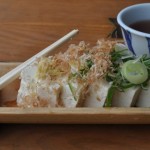
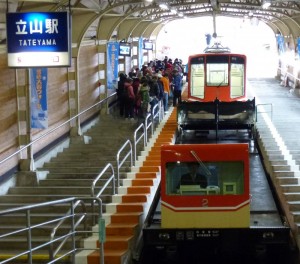
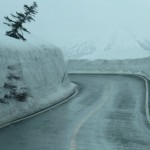
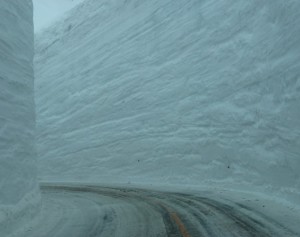

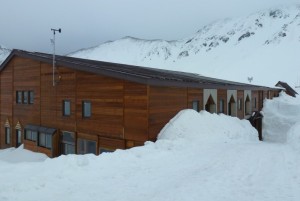
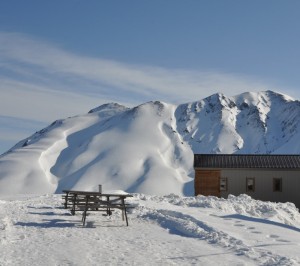
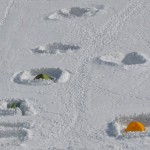
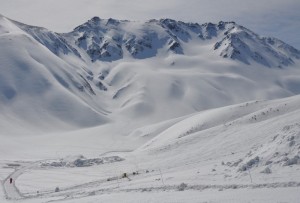
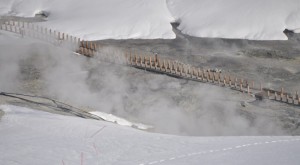

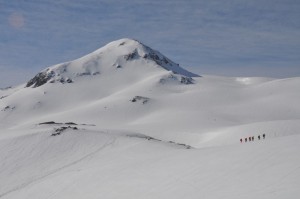
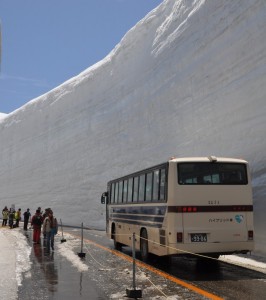
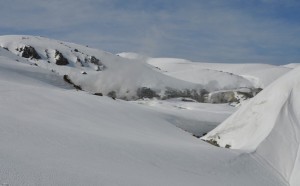
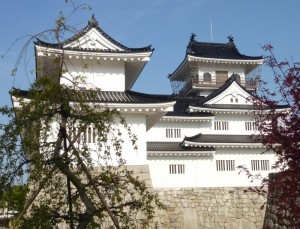
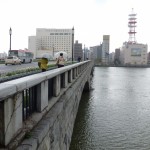
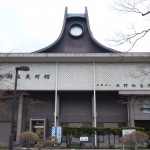
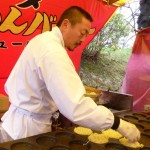
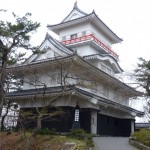
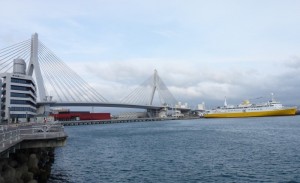
Hi! Are you enjoying your trip?
I hope you were able to be satisfied with the hot spring last night.
One day ,I am sure to visit Hng Kong! And take many many photoes like you!
Look after yourself and have a nice trip!
( I am sorry if my English is hard to understand)